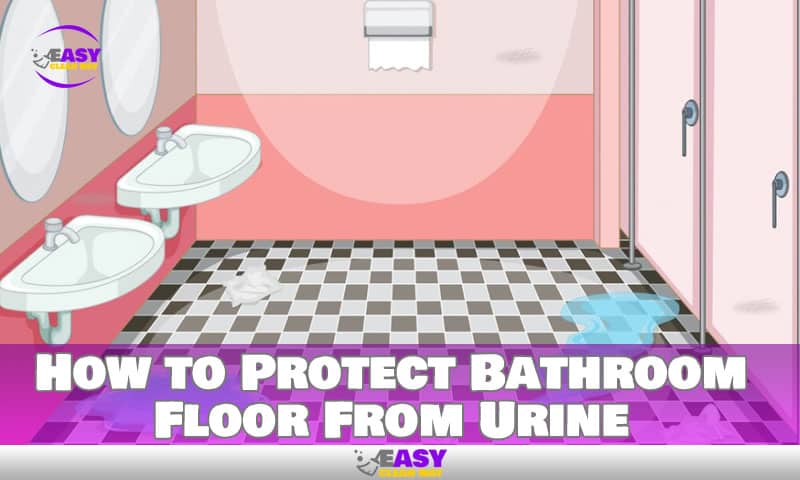To clean ghosting on walls and ceilings, start by mixing equal parts of warm water and white vinegar. Then, use a sponge or cloth dampened with the mixture to gently wipe away the ghosting stains.
What Causes Ghosting On Walls And Ceilings?
Explanation Of Common Causes of Ghosting:
Ghosting refers to the dark, sooty stains that appear on walls and ceilings, resembling the outlines of objects or patterns. Understanding the causes of ghosting is essential to effectively addressing and preventing it. Here are the common causes:
- Inadequate insulation: Insufficient insulation allows warm air to escape through walls and ceilings, causing condensation. This condensation attracts dirt particles, leading to ghosting stains.
- Candle soot: The use of candles can contribute to ghosting. The fine soot particles released during burning can stick to surfaces and create the dark smudges characteristic of ghosting.
- Drafts: Poorly sealed windows and doors can result in drafts, causing temperature variations within a room. These fluctuations create a temperature divide where ghosting can occur.
- Furnace and HVAC systems: When these systems are not properly maintained, they can produce soot or emit particles into the air. These particles settle on surfaces and contribute to ghosting.
- Household activities: Certain activities within the home release smoke, such as cooking on a stovetop or using a fireplace. The smoke particles can travel through the air and settle on walls and ceilings, causing ghosting stains.
Discussion On The Role Of Air Circulation And Temperature Variations:
Understanding the role of air circulation and temperature variations can help manage ghosting issues effectively. Consider the following points:
Air circulation: Proper air movement in a room can help reduce the occurrence of ghosting. Here’s why:
- Adequate air circulation helps prevent the build-up of stagnant air and reduces the chance of condensation occurring on walls and ceilings.
- Good ventilation systems can effectively remove particles and gases from the air, preventing them from settling on surfaces and causing ghosting stains.
Temperature variations: Fluctuating temperatures within a room contribute to ghosting in several ways:
- When warm air comes into contact with cooler surfaces, condensation forms. This condensation attracts dust and airborne particles, leading to ghosting stains.
- Temperature variations can create temperature differentials within a room, causing air to move differently. This uneven airflow can contribute to the distribution of soot particles and result in ghosting.
Understanding the impact of air circulation and temperature variations on ghosting can guide you in implementing measures to prevent and manage this issue effectively.
Impact Of Household Activities On Ghosting:
Several routine household activities can have a significant impact on the occurrence of ghosting. Consider the following points:
- Cooking: Cooking activities, particularly on stovetops without proper ventilation, can release smoke, oils, and particles into the air. These particles can settle on walls and ceilings, causing ghosting stains.
- Burning candles: When candles are burned indoors, they release soot particles that can adhere to surfaces and lead to ghosting.
- Fireplace usage: The use of a fireplace can release soot and smoke, which can easily spread throughout a room. These particles can settle on walls and ceilings, contributing to ghosting stains.
- Smoking: Smoking indoors releases airborne particles and tar that can deposit on surfaces, including walls and ceilings, resulting in ghosting.
- Drying clothes indoors: Hanging wet clothes indoors without proper ventilation can release moisture into the air. This moisture, combined with dust particles, can settle on surfaces and contribute to ghosting.
Being mindful of these household activities and implementing proper ventilation can help minimize the impact they have on ghosting issues in your home.
Identifying Ghosting Patterns And Types

Differentiating Between Mold Growth And Ghosting:
- Mold growth and ghosting are two distinct issues that can occur on walls and ceilings.
- Mold growth is the result of moisture and can appear as fuzzy patches of black, brown, or green.
- Ghosting, on the other hand, is a phenomenon where dark stains or patterns form on surfaces.
- One way to differentiate between mold growth and ghosting is by examining the texture of the stains.
- Mold growth often has a fuzzy or powdery texture, while ghosting stains are typically flat and soot-like in appearance.
Explanation Of Common Ghosting Patterns On Walls And Ceilings:
- Ghosting patterns can vary in appearance, but they often follow specific lines or edges on walls and ceilings.
- Common ghosting patterns include parallel streaks along studs, ceiling joists, or insulation.
- Other patterns may include outlines of furniture, fittings, or even electrical outlets and switches.
- The dark stains caused by ghosting are the result of soot particles accumulating in areas with cooler temperatures.
- Inadequate temperature regulation, poor air circulation, and combustion particles are often the culprits behind these patterns.
Importance Of Identifying Ghosting Types For Effective Removal:
- Identifying the specific types of ghosting patterns is essential for effective removal.
- Different types of ghosting may require different cleaning techniques or remediation methods.
- By understanding the root cause of the ghosting, such as insulation issues or combustion particles, you can address the problem at its source.
- Proper identification allows you to implement preventive measures to minimize the recurrence of ghosting in the future.
- It is crucial to consult professionals if you are unsure about the type of ghosting or if the stains persist even after cleaning attempts.
Remember to provide enough useful and informative content while maintaining a conversational tone. Keep your sentences concise and engaging, avoiding repetitive phrases or overused words.
Preparing For Ghosting Removal
Ghosting, the mysterious phenomenon of dark, sooty patches appearing on your walls and ceilings, can be frustrating to deal with. However, with the right tools and proper preparation, you can successfully remove ghosting and restore the appearance of your home.
In this section, we will discuss the key points to consider when preparing for ghosting removal.
Gathering necessary tools and materials:
- Before you begin the ghosting removal process, it’s important to gather all the necessary tools and materials. This will ensure that you have everything you need for a smooth and efficient process.
Some essential tools and materials you might need include:
- Rubber gloves to protect your hands during the cleaning process
- Dust mask to prevent inhalation of any particles or debris
- A soft sponge or microfiber cloth for gentle cleaning
- Mild detergent or cleaning solution suitable for your walls and ceilings
- Bucket of warm water for diluting the cleaning solution
Ensuring safety measures are in place:
Safety should always be a top priority when dealing with any home improvement project. When preparing for ghosting removal, make sure to follow these safety measures:
- Ensure proper ventilation in the room by opening windows or using fans to circulate fresh air.
- Use a sturdy ladder that is appropriate for the height of the walls and ceilings you will be working on.
- Secure the ladder and ensure it is on a stable surface to prevent accidents or falls.
- Wear appropriate safety gear, such as eye protection, to protect yourself from any potential splashes or debris.
Cleaning the affected areas prior to removal:
- Before you begin removing ghosting, it’s important to clean the affected areas to remove any loose dirt or dust that may have accumulated.
- Start by dusting the walls and ceilings using a soft brush or microfiber cloth to remove any loose particles.
- If the ghosting is on a painted surface, you can use a gentle household cleaner or a mild detergent diluted in warm water to clean the area.
- Test the cleaning solution on a small, inconspicuous area first to ensure it does not damage or discolor the surface.
- Gently scrub the affected areas using a sponge or cloth, making sure not to apply too much pressure that may damage the surface.
- Rinse the cleaned areas with clean water and allow them to dry completely before proceeding with the ghosting removal process.
By following these key points and adequately preparing yourself and the affected areas, you will be ready to tackle the ghosting removal process effectively. Remember to gather all the necessary tools and materials, prioritize safety measures, and thoroughly clean the affected areas before moving on to the next steps.
Let’s get rid of those ghostly patches and revive the beauty of your walls and ceilings!
Expert Tips For Easily Removing Ghosting On Walls And Ceilings
Ghosting, or the appearance of dark, dirty streaks on walls and ceilings, can be a frustrating problem for homeowners. Understanding how to effectively clean and remove ghosting requires a combination of knowledge and the right techniques. We will explore expert tips to help you easily remove ghosting from your walls and ceilings.
Step 1: Understanding The Surface And Paint Type
To effectively clean ghosting, it’s essential to understand the surface you are dealing with and the type of paint used. Different paint finishes may have specific cleaning requirements, and using the wrong cleaning solutions or techniques may cause damage. Here are some key points to consider:
- Common paint finishes include matte, eggshell, satin, semi-gloss, and gloss. Each finish has different levels of sheen and may require specific cleaning methods.
- Matte finishes are more porous and delicate, requiring gentle cleaning techniques to avoid damaging the paint.
- Glossy finishes are more durable and can withstand more aggressive cleaning methods, but caution should still be exercised to prevent scratches or peeling.
Remember, knowledge about the surface and paint type is crucial for preventing further damage and ensuring successful cleaning.
Step 2: Using The Right Cleaning Solutions And Techniques
Once you have identified the surface and paint type, it’s time to choose the appropriate cleaning solutions and techniques. While there are commercial cleaning products available, you can also try effective homemade solutions. Here are some recommendations:
- Homemade solutions: Mix equal parts of water and vinegar, or water and mild dish soap, to create a gentle cleaning solution.
- Commercial cleaning products: Look for mild, non-abrasive cleaners specifically designed for the surface and paint type you are dealing with. Read the instructions carefully before using them.
Remember to always test any cleaning solution on a small, inconspicuous area first to ensure it doesn’t cause discoloration or damage to the paint.
Step 3: Gentle Scrubbing And Stain Removal
When it comes to scrubbing away ghosting on walls and ceilings, it’s important to use gentle techniques to avoid further damage. Here are some tips for scrubbing and stain removal:
- Use a soft-bristle brush or sponge to gently scrub the affected areas. Avoid using abrasive materials that can scratch the surface.
- Start with a light pressure and gradually increase if needed, while still being cautious not to damage the paint.
- For stubborn stains, try spot-cleaning with a mixture of baking soda and water. Apply the paste to the stain, let it sit for a few minutes, then gently scrub and rinse.
Keep in mind that the effectiveness of stain removal methods may vary depending on the type of stain and the age of the ghosting marks.
Step 4: Repainting Or Touch-Ups
After successfully removing ghosting marks, you may notice areas where the paint has faded or been removed. To achieve a seamless and uniform appearance, consider the following steps:
- Repainting: If the ghosting marks were extensive, it might be necessary to repaint the affected walls or ceilings entirely. This ensures a fresh and even finish.
- Touch-ups: For minor areas, touch-ups can be done by using the same paint color and applying it to the affected spots. Make sure to feather the edges of the touched-up area to blend it in with the surrounding paint.
By following these expert tips, you can easily remove ghosting from your walls and ceilings, restoring them to their former glory. Remember to exercise caution, test cleaning solutions, and be mindful of the surface and paint type to prevent any damage during the cleaning process.
Preventing Future Ghosting

Maintaining proper air circulation and ventilation:
- Ensure that all rooms in your home have adequate air circulation by opening windows or using fans.
- Avoid blocking air vents with furniture or other objects.
- Install ceiling fans to help circulate air and prevent stagnant areas.
- Consider using air purifiers or dehumidifiers to improve air quality and reduce condensation.
Controlling indoor humidity levels:
- Monitor and maintain indoor humidity levels between 30% and 50%.
- Use a hygrometer to measure humidity levels in different rooms.
- Use dehumidifiers in areas prone to high humidity, such as basements or bathrooms.
- Repair any leaks or water damage to prevent moisture buildup.
Regular cleaning and maintenance practices to prevent ghosting:
- Vacuum or dust walls and ceilings regularly to remove dirt and debris.
- Wipe down walls and ceilings with a damp cloth or sponge to remove any stains or marks.
- Avoid using harsh chemicals or abrasive cleaners, as they can damage paint or wallpaper.
- Consider using paint with anti-ghosting properties or applying a primer before repainting.
- Inspect and repair any cracks or gaps in walls or ceilings to prevent air leakage.
By following these preventive measures, you can minimize the occurrence of ghosting on your walls and ceilings.
FAQs
How Do You Clean Ghosting On Walls And Ceilings?
To clean ghosting on walls and ceilings, use a solution of warm water and mild dish soap, scrub gently, and rinse with clean water.
What Causes Ghosting On Walls And Ceilings?
Airborne particles, such as soot or dust, that adhere to the surface as a result of temperature differences or poor ventilation are what cause ghosting on walls and ceilings.
Can I Use Bleach To Remove Ghosting?
No, bleach is not recommended for removing ghosting as it may damage the paint or wallpaper. Stick to mild cleaning solutions instead.
How Can I Prevent Ghosting From Happening Again?
To prevent ghosting, ensure proper ventilation, maintain a consistent temperature, clean air filters regularly, and minimize the use of candles or tobacco indoors.
Conclusion
Removing ghosting from walls and ceilings can be a challenging task, but with the right techniques and products, it is achievable. By following a systematic approach and using effective cleaning solutions, you can get rid of those unsightly ghost marks and restore the beauty of your walls and ceilings.
Remember to start by identifying the cause of the ghosting and addressing any underlying issues to prevent future occurrences. Then, gather the necessary tools, such as a mild cleaning solution, a soft cloth, and a light hand, to avoid damaging the surfaces.
Take your time and work in small sections, being thorough and patient. Once the cleaning is complete, admire the results and enjoy the clean and fresh appearance of your walls and ceilings. Regular maintenance and proper care can go a long way in preventing ghosting from reappearing.
So go ahead and give your walls and ceilings the attention they deserve and say goodbye to ghosting once and for all.
Hey there! I’m Alton Smith, your Clean Expert blogger. I’m on a quest to help you conquer chaos and embrace the joys of a tidy life.





